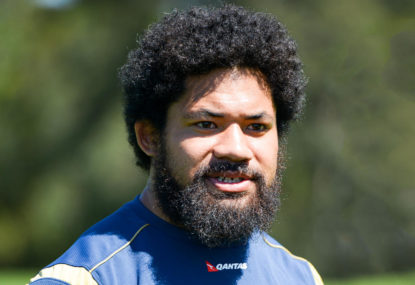Ned Stevens
new author
Roar Rookie

Forget Super Rugby for a second. The game in this country really begins on March 24 in Queensland, April 7 in New South Wales and Canberra, and on April 21 in Melbourne.
Add to this the games in Western Australia and the Northern Territoy and we will be in full swing.
Frustration with the governance of Rugby Australia combined with poor results in Super Rugby for Australian sides has resulted in fans starting to walk away from the game.
Yet, amidst all of the chaos, club rugby has stoked the fire.
Club rugby provides what is lacking in Super Rugby. Passion. A deep burning desire for your team to win. Of course, this is driven by the localisation of each side – we see the players train, celebrate and work in their day to day lives.
We can also identify with our side because these guys aren’t just people we see on the TV once a week, they are people we know. They care and hence, we care.
It allows us to connect, to belong to something greater than the individual.
For too long has there been a gulf between Queensland and the Reds, between New South Wales and the Waratahs. Long gone are the days where 20,000 turn up to GIO Stadium and barrack for the Brumbies.
These sides are meant to represent us, however the link has been weakened with a lack of rugby fundamentals that are built on effort. The public has and always will back sides that compete, but when that is not evident, support wavers.
Compounding these issues is the ever-competitive Australian sporting landscape. Rugby has been pushed to the outskirts, allowing many to be taken away by other sports.
Despite these complications, suburban teams provide a connection for locals to actually be part of rugby. Not just a spectator but a fan; someone who wears their heart on their sleeve.
In the Shute Shield, an estimated 20,000 turned up to see Warringah hold on to beat Norths in an absolute thrilling final last year. In Queensland, over 6600 turned up to watch UQ finally beat GPS in their final – more than half of the 11,000 at the Round 1 Reds vs Brumbies match this season.
[latest_videos_strip category=”rugby” name=”Rugby”]
These crowds, along with the passion, desire and tribalism that club rugby brings, is the much-needed medicine to help revive our sick game. We need to tap into what works in these state competitions and take them to the bigger stage.
At the very least, the barriers between the professional sides and the clubs that sit beneath them need to be broken down. These relationships need to be enhanced in order for the clubs to offer their much-needed qualities to our state and Super Rugby organisations.
Most annoyingly, players are frequently withheld from playing for their allotted club side, even when they are not required for their Super Rugby side. To restore the allegiances and loyalty of club rugby back to our Super sides, these players need to be playing club football so we can have someone to represent us and identify with when we attend games. The more they play, the better.
Along with this, changes should be made to help increase the attendance of clubs to the professional games. If at every stadium a portion of its capacity was opened up to the clubs, with discounted tickets offered to registered players and their families, not only would crowds increase and generate more revenue, but the atmosphere would be vastly improved.
One thing is certain: club rugby is re-establishing the craving for the game around the nation. I’m excited to see it back.